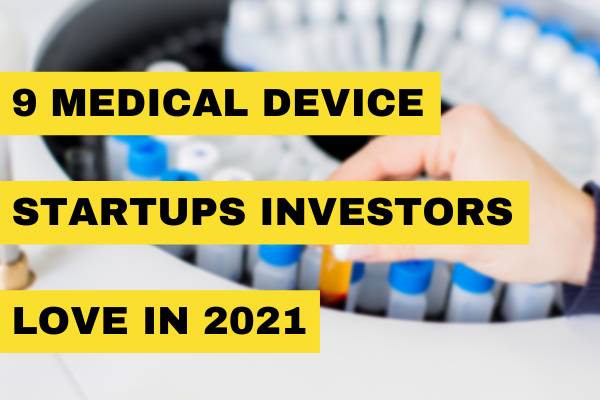Planning for Cloud Connectivity: A Roadmap for Medical Device Design
As the Internet of Things (IoT) proliferates, society and businesses are moving towards greater connectivity, creating massive data flows into the cloud. Cloud connectivity is already having a seismic impact on health care and the advanced medical device industry.
A recent study by MarketsandMarkets predicted that the global healthcare cloud computing market will reach USD 89.4 B by 2027 from USD 39.4 B in 2022, at a CAGR of 17.8%. Several factors are driving growth, including the need for improved patient care, increased efficiency, cost savings, and the growing demand for telehealth, wearables, and remote monitoring services.
Cloud-enabled healthcare innovation is transforming research, patient treatment, and outcomes. However, there are costs and risks associated with medical device cloud connectivity. Click To TweetAt Galen Data, we encourage clients to consider the implication of connectivity early in their Roadmap planning. Companies must consider hardware and software choices, regulatory issues, security protocols, privacy laws, and more.
This post offers an overview of several considerations. Our free whitepaper, “The Definitive Guide to Medical Device Connectivity,” goes into much more detail about each one.
Defining the Need for Connectivity
Accounting for medical device cloud connectivity begins early in the planning stages. It is important to define the connectivity goals early to integrate them into all relevant points in development, from writing code to regulatory approval and, finally, implications for the end user. Different countries may have different standards. Early in planning is the time to define all the parameters for a successful launch and market penetration.
Know Your Use Case for the Data
The use case for the advanced medical device determines data storage and usage consideration. The use case can impact business goals and timing for cloud connectivity. Common use cases include:
- Remote patient monitoring
- Implantable devices and sensors
- At-home care delivery
- Firmware updates
- Device status monitoring
- Remote testing/diagnosis
- Patient compliance
- Outcome traceability
Phase in Data Needs
In health care, data collection is a sensitive and highly regulated area. Simplify your initial launch if possible by planning to collect only necessary information at first. The data you collect should be limited to what is necessary for your device’s intention and essential services.
As the business or technology evolves, data requirements may change. What features or use cases do you envision supporting in the future? Consider how your needs may change as you grow into a larger business with more features or use cases in mind for future innovation.
Analyze Your data risk
Collecting and storing data is a legal responsibility that exposes your business to risk. What happens if the data is hacked or compromised in some way? Create a thorough risk analysis plan to mitigate the risk and have contingency plans in place for the worst-case scenario. This is not the most enjoyable part of planning, but it could make a huge difference if you experience a data breach.
Hardware Considerations for Device Connectivity
Hardware for medical devices is like the vehicle that delivers the data from the medical device to the cloud storage. When you consider what type of delivery vehicle you need, consider four main factors: operating environment, frequency of data delivery, the bandwidth required, and how the device interacts with the patient.
Software Considerations for Advanced Medical Device Connectivity
If hardware is the data delivery vehicle, the software is the dispatch system. The developer team should consider scalability and availability goals, along with data integrity and security. Stateless architectures are preferable as they enhance scalability and increase resilience against failures.
Choosing the right software stack is also important for cybersecurity, as unsupported libraries may have unpatched vulnerabilities. Opt for libraries and frameworks with a large and vibrant community of developers contributing to their stability, or choose options where you can purchase support at a reasonable cost.
Regulatory Considerations
It is critically important to research what kind of regulatory compliance you will need in the early stages. Achieving regulatory approval is a complex process.
The chart below summarizes some of the main standards. Regulations differ from country to country and are subject to change, too. Because of this, it is important to plan for the appropriate standard in your regulatory pathway for your use case.

Source: Galen Data, The Definitive Guide to Medical Device Connectivity
Cybersecurity and Privacy Considerations
In 2020 as US hospitals were in the trenches fighting a global pandemic, they experienced a horrible increase in cyberattacks. Ransomware attacks on hospitals doubled. In some cases, hospital personnel were reduced to using paper to track patient treatment, adding unimaginable stress to an already challenging environment.
As a result, healthcare cybersecurity and data security are top industry and government priorities. Cloud connectivity brings up important data privacy and security issues for medical device companies. Devices that are not secure increase regulatory and financial risks for their makers, customers, and patients. Considerations for advanced medical device manufacturers include:
- Reviewing existing cybersecurity and privacy regulations
- Risk planning and assessment
- Securing Protected Health Information (PHI)
- Establishing a culture of cybersecurity
- Designing with security in mind
- Securing access to data and systems
- Developing a surveillance program
- Setting up appropriate agreements
Because of the scope of the issue, we cover best practices for cybersecurity in this post and our whitepaper as well.
Build vs. Buy
Companies have many factors to consider when deciding whether to build connectivity in-house or buy/contract with an advanced medical device cloud connectivity provider. One key factor is the company’s core competency.
If the company’s core business is not in software or data engineering, it may be better to buy a cloud connectivity solution. Another key factor to consider is the device’s stage of development. If the device is in the early stages of product development, it may make more sense to build a custom solution tailored specifically to the company’s needs.
However, suppose the company is further along in its development cycle and is looking to scale quickly. In that case, it may be better to buy an off-the-shelf solution for faster implementation. Ultimately, deciding whether to build or buy in advanced medical device cloud connectivity boils down to resources and speed to market.
Moving Ahead
Cloud connectivity is a hot topic in the medical device industry due to issues like security and the proliferation of connected devices. Like most challenges, connectivity presents both opportunities and risks for manufacturers. You should consider cloud connectivity early in the design roadmap to mitigate risk and take advantage of potential benefits.
Contact us today if you’re unsure how to manage cloud connectivity considerations for your product. We can help you assess the pros and cons and make an informed decision for your product development roadmap.






